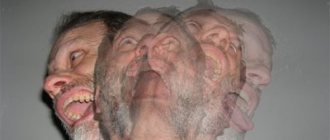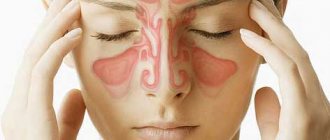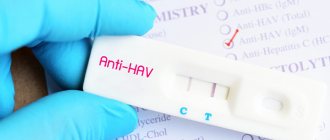Every medication has side effects, and some of them can seriously undermine a person’s health or even cause death.
Neuroleptics (or, in other words, antipsychotics), used primarily to treat severe mental disorders, also have an extensive list of possible side effects, the most dangerous of which is neuroleptic malignant syndrome.
Should I take antidepressants? Find out about this from our article.
What is neuroleptic malignant syndrome?
Neuroleptic malignant syndrome ( NMS ) is a rare but potentially life-threatening reaction to the use of almost any of the group of antipsychotic drugs or major tranquilizers (neuroleptics). These drugs are usually prescribed to treat schizophrenia and other neurological, mental, or emotional disorders. Some of the most commonly prescribed antipsychotics include thioridazine, haloperidol, chlorpromazine, fluphenazine, and perphenazine.
NMS is characterized by high fever, muscle stiffness, altered mental status (paranoid behavior), and autonomic dysfunction. Autonomic dysfunction is associated with disruption of components of the involuntary (autonomic) nervous system, which leads to sharp fluctuations in blood pressure, excessive sweating and excessive secretion of saliva.
A genetic basis for the disease is suspected but not proven. It is clear that a defect in dopamine receptors (dopamine D2 receptor antagonism) is an important factor causing neuroleptic malignant syndrome.
What it is?
Neuroleptics , drugs that can alleviate or completely eliminate the main symptoms observed in psychotic disorders: delusions and other thought disorders, hallucinations, pseudohallucinations, behavioral disorders, pathological aggressiveness, mania.
Most often, classical antipsychotic drugs are prescribed for:
- schizophrenia,
- various psychoses,
- schizoaffective disorder,
- delirium,
- severe neurological disorders,
- withdrawal syndromes associated with taking alcoholic beverages or drugs.
Also, antipsychotics, especially atypical ones , can be used in the treatment of severe forms of depression, neuroses, anxiety disorders, autism, depersonalization and derealization, episodes of mania in bipolar disorder.
In small doses they can be prescribed as a remedy for insomnia and other sleep disorders, in the treatment of various side effects of radiation therapy and chemotherapy.
The first antipsychotics, such as Haloperidol , have a more extensive list of side effects and can significantly impede a person’s functioning, since they strongly affect cognitive functions and cause inhibition.
Modern antipsychotics , especially atypical ones, are much less likely to cause significant side effects.
Neurolepsy , a condition that can occur in people taking antipsychotic medications.
A person in this state feels very relaxed, lethargic, and his emotions are practically absent. Often these sensations are complemented by other side effects of antipsychotics, and extrapyramidal disorders may occur.
Neurological disorders that occur under the influence of antipsychotic drugs are combined into a term called “neuroleptic syndrome,” of which several types are distinguished. One of them is neuroleptic malignant syndrome .
Neuroleptic malignant syndrome is not a very common pathology. It is detected in about 0.1-3.2% of people taking antipsychotic medications, and can develop while taking absolutely any antipsychotic drug, even modern and fairly safe ones.
But the likelihood of its development is much higher when taking strong classical antipsychotics such as haloperidol. Atypical antipsychotics provoke the development of NMS much less frequently.
The main symptoms of NMS affect both the somatic and mental spheres . This condition is extremely dangerous, since the probability of dying even with timely medical care is 10-12%. A few decades ago, the death rate was three times higher.
There is also another serious disorder that can occur while taking antipsychotics: neuroleptic deficiency syndrome . It, like the previous pathology, is more often caused by classical (typical) antipsychotics.
affecting the cognitive and behavioral spheres come to the fore volitional qualities, thinking, attention, and the ability to function in society suffer.
If measures are not taken in a timely manner, pathological changes may become irreversible .
Unlike NMS, VAT is very common: about 80% of patients taking antipsychotic medications belonging to the “typical” group experience one or another manifestation of this side effect.
Tricyclic antidepressants, what are they? Read about it here.
Signs and symptoms
Symptoms of neuroleptic malignant syndrome usually include very high fever (39 to 40 degrees Celsius), irregular pulse, rapid heartbeat (tachycardia), rapid breathing (tachypnea), muscle stiffness, mental status changes, autonomic nervous system dysfunction resulting in high or low blood pressure, profuse and increased sweating.
Other symptoms may include liver or kidney failure, abnormally high potassium levels (hyperkalemia), severe breakdown of skeletal muscle tissue (rhabdomyolysis), or blood clots in the veins and arteries.
Causes
Neuroleptic malignant syndrome most likely results from “dopamine D2 receptor antagonism.” Dopamine is a chemical (neurotransmitter) found in the brain and other parts of the central nervous system that carries messages from one cell to another. In a sense, using a certain drug blocks the dopamine receptor in the brain cell.
When dopamine receptors in the hypothalamus or other bundle of nerve fibers (nigrostriatal tracts) and/or the spinal cord are blocked, increased muscle stiffness results. Interaction with dopamine receptors in the hypothalamus is also likely responsible for high body temperature as well as fluctuations in blood pressure.
Some doctors believe that neuroleptic malignant syndrome may be related to malignant hyperthermia, a genetic disorder characterized by an abnormal response to anesthetic drugs.
Affected Populations
Neuroleptic malignant syndrome (NMS) can affect anyone taking antipsychotic drugs. Men are at higher risk than women. Some clinicians believe that stronger antipsychotics are more likely to precipitate an attack of NMS.
Although two-thirds of cases are thought to occur within the first week of treatment, the syndrome can begin at any time during treatment.
Recurrence of attacks of NMS is not uncommon. The risk of relapse is closely related to the time elapsed between the end of the initial episode of neuroleptic malignant syndrome and the start of a new antipsychotic drug. If the waiting period is two weeks or less, about 63% will recur. If the waiting period is more than two weeks, the percentage of patients experiencing a relapse drops to about 30.
Stopping an attack
The patient should be given an antipyretic, calmed down, and relieved of nervousness. But first of all, gastric and intestinal lavage is most often required, since neuroleptic intoxication has occurred - in fact, drug poisoning. The stomach is washed with a weak salt solution. It is also recommended to use adsorbent substances that absorb and remove toxins from the body.
The respiratory center may be depressed. During an attack of NMS, a person may need artificial ventilation to relieve symptoms of developing internal organ failure. Of course, taking the antipsychotic that caused the attack must be stopped immediately.
First aid should be provided by qualified physicians in a hospital setting. If alarming symptoms or a strong increase in temperature appear, immediately call an ambulance.
In case of heart rhythm disturbances, emergency doctors will give an injection of lidocaine, and in case of convulsions - difazepam. The main treatment awaits the patient in the intensive care unit of the hospital.
Disorders with similar symptoms
Symptoms of the following diseases may be similar to those of neuroleptic malignant syndrome. Comparisons can be useful for differential diagnosis:
- Anaphylaxis is an abnormally severe allergic reaction to a substance. Main symptoms may include severe itching, hives, redness, swelling, vomiting, diarrhea, difficulty breathing (dyspnea), and loss of consciousness (syncope). A high temperature is not a sign of anaphylaxis.
- Fatal catatonia is a condition similar to NMS and is often confused with it. A detailed history may indicate that the patient has experienced catatonic states without taking antipsychotics. If so, there is a good chance that the syndrome present is NMS. A patient with fatal catatonia will respond to antipsychotic medications. However, it is almost impossible to predict whether a patient's symptoms will worsen or improve. Patients with fatal catatonia almost always experience a period of agitation and agitation preceding catatonia. This is in contrast to a patient with NMS, whose first symptom is usually muscle stiffness.
- Heatstroke is a very serious illness characterized by a sharp and rapid increase in body temperature, which can reach 40-41 degrees Celsius. Heat stroke usually occurs as a result of exposure to an extremely hot environment. The skin may become hot, red and dry. Rapid fluid loss can lead to sweating. Sweating is necessary to cool the body. Increased heart rate and breathing may also occur. The victim may become disoriented and eventually experience seizures or loss of consciousness. Measures such as wrapping the person in cold, damp sheets should be taken immediately to reduce body temperature. A person suffering from heatstroke should be hospitalized as quickly as possible.
- Malignant hyperthermia is a genetic disorder characterized by an abnormal response to muscle relaxants and general anesthesia drugs. Symptoms of malignant hyperthermia appear only after the patient has been placed under general anesthesia. Along with a rapid increase in body temperature, which can reach 43 degrees, muscle rigidity and/or muscle twitching occurs. The patient may also experience very fast and irregular heartbeat, abnormally low blood pressure, painful sweet breath, headache, nausea and vomiting. It is unknown whether neuroleptic malignant hyperthermia is a type of malignant hyperthermia, but some researchers have suggested that the disorders may be related.
- Serotonin syndrome mimics neuroleptic malignant hyperthermia. If the use of selective serotonin reuptake inhibitors (SSRIs) results in symptoms such as altered mental status, autonomic dysfunction, and neuromuscular defects, then it is most likely serotonin syndrome. As SSRIs are used in increasing quantities, it is reasonable to expect that the incidence of serotonin syndrome will also increase. Serotonin syndrome can in most cases be differentiated from NMS by a detailed history that details any changes in treatment and/or dosage. In addition, serotonin syndrome is not usually accompanied by severe muscle stiffness.
First aid
First of all, in order to remove the drug that provokes the development of the syndrome from the body, gastric lavage is performed. This procedure should be carried out as early as possible otherwise problems with the gastrointestinal tract may occur. After the above procedure, oxygen therapy is carried out.
Article on the topic: Why do you drink hydrogen peroxide - beneficial properties and indications for use, regimen for treatment or weight loss
If respiratory depression is observed, it is necessary to alleviate it for the patient by connecting auxiliary artificial respiration devices. In case of collapse, norepinephrine and fluid are administered intravenously.
Diagnostics
The diagnosis of neuroleptic malignant syndrome is based on the presence of signs that include treatment with antipsychotic drugs within the last 1-4 weeks, high body temperature (above 38 degrees Celsius); muscle stiffness; and at least five of the following symptoms:
- change in mental status;
- rapid heartbeat (tachycardia);
- low or high blood pressure (hypo- or hypertension);
- excessive sweating (hyperhidrosis);
- excessive saliva production (sialorrhea)
- tremor;
- urinary incontinence;
- increased creatine phosphokinase or increased myoglobin in the urine;
- increased number of white blood cells (leukocytosis);
- increased concentration of metabolic acids in the blood and urine.
It is also necessary to exclude other mental or systemic diseases caused by medication.
Standard Treatments
Treatment for neuroleptic malignant syndrome involves stopping antipsychotic medications under medical supervision, taking immediate steps to restore adequate water and nutrient levels, and taking steps to lower the person's body temperature. Medicines prescribed as treatment may include skeletal muscle relaxants such as dantrolene; stimulants of dopamine production and activity, such as bromocriptine; and/or continuous perfusion of central nervous system depressants such as diazepam.
Complications that can result from neuroleptic malignant syndrome, such as kidney failure, lack of oxygen reaching tissues (hypoxia), and/or decreased alkalinity of the blood and tissues (acidosis), can be extremely serious and require immediate treatment. Once patients recover from neuroleptic malignant syndrome, about 87% will be able to tolerate antipsychotic medications at some point in the future. Doctors usually switch to a different class of antipsychotic and to atypical antipsychotics. Such patients should be closely monitored, since relapses of neuroleptic malignant syndrome are common.
Treatment principle
At the first symptoms of the syndrome, it is necessary to hospitalize the patient
Therapy is carried out only in a hospital. The appearance of at least one alarming symptom during antipsychotic therapy is a reason for urgent hospitalization of the patient.
First of all, the medications that triggered the development of the syndrome should be discontinued. Then symptomatic drug therapy is used. The patient is administered medications that reduce muscle hypertonicity and relieve nervous excitement. As a rule, at the very beginning, treatment is carried out with drugs from the benzodiazepine group, which reduce the neurological manifestations of the disorder.
The first days the patient is in the intensive care unit under constant supervision of medical personnel. This is necessary so that doctors can take timely measures and respond to deterioration of the condition against the background of symptomatic therapy.
Measures must be taken to normalize water and electrolyte balance. The patient needs to normalize body temperature and provide adequate nutrition. It is important to replenish fluid losses, as dehydration aggravates the patient's general condition. For this purpose, special protein solutions are used for intravenous administration.
Detoxification treatment is required to remove neuroleptics from the body.
Depending on the exact symptoms, the patient may be prescribed drugs to normalize blood pressure and antiarrhythmic agents.
A dangerous complication of the disorder is cerebral edema. In the intensive care unit, measures are taken to prevent such a complication, so the patient may be given diuretics.
Additionally, antibiotics are prescribed to prevent pneumonia, nootropic drugs to protect the brain, and a catheter is installed to facilitate urination.
To eliminate mental manifestations of the disorder, tranquilizers are prescribed.
Specific treatment
The main direction of therapy is the normalization of dopamine metabolism with the help of special drugs. Amantadine and Dantrolene are used for treatment. As practice shows, these drugs are most effective in the treatment of NMS.
To eliminate muscle rigidity, Bromocriptine is prescribed, as this drug has a pronounced muscle relaxant effect.
Therapy is adjusted depending on the characteristics of the symptoms and the patient’s body’s response to medications. On average, specific therapy takes from 10 to 21 days.
In severe cases, when drug treatment is ineffective, electroconvulsive therapy is used. This allows you to quickly eliminate symptoms and achieve a lasting effect. According to some experts, electroconvulsive therapy is most effective in the first two days after the first symptoms of the disorder appear.
Forecast
Initial reports of mortality from NMS were over 30%, but increased physician awareness and the introduction of new antipsychotic drugs over the past few decades have helped reduce it to almost 10%.
When detected early and treated aggressively, NMS is usually not fatal, and most patients make a full recovery within 2 to 14 days. But if diagnosis and treatment are delayed, resolution may take several weeks or longer, and surviving patients may have residual catatonia or parkinsonism or significant morbidity secondary to renal or cardiopulmonary complications.
When death does occur, it is usually due to arrhythmia, disseminated intravascular coagulation, or cardiovascular, respiratory, or renal failure. Thus, early recognition and initiation of therapeutic interventions by physicians remains of paramount importance to reduce the incidence of severe cases of NMS and limit this significant source of morbidity and mortality among patients receiving antipsychotics.









